WHAMM functions in kidney reabsorption and polymerizes actin to promote autophagosomal membrane closure and cargo sequestration
- PMID: 38598293
- PMCID: PMC11238085
- DOI: 10.1091/mbc.E24-01-0025
WHAMM functions in kidney reabsorption and polymerizes actin to promote autophagosomal membrane closure and cargo sequestration
Abstract
The actin cytoskeleton is essential for many functions of eukaryotic cells, but the factors that nucleate actin assembly are not well understood at the organismal level or in the context of disease. To explore the function of the actin nucleation factor WHAMM in mice, we examined how Whamm inactivation impacts kidney physiology and cellular proteostasis. We show that male WHAMM knockout mice excrete elevated levels of albumin, glucose, phosphate, and amino acids, and display structural abnormalities of the kidney proximal tubule, suggesting that WHAMM activity is important for nutrient reabsorption. In kidney tissue, the loss of WHAMM results in the accumulation of the lipidated autophagosomal membrane protein LC3, indicating an alteration in autophagy. In mouse fibroblasts and human proximal tubule cells, WHAMM and its binding partner the Arp2/3 complex control autophagic membrane closure and cargo receptor recruitment. These results reveal a role for WHAMM-mediated actin assembly in maintaining kidney function and promoting proper autophagosome membrane remodeling.
Figures
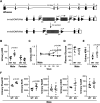
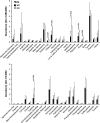

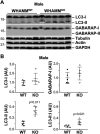
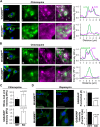
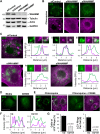



Update of
-
WHAMM functions in kidney reabsorption and polymerizes actin to promote autophagosomal membrane closure and cargo sequestration.bioRxiv [Preprint]. 2024 Jan 23:2024.01.22.576497. doi: 10.1101/2024.01.22.576497. bioRxiv. 2024. Update in: Mol Biol Cell. 2024 Jun 1;35(6):ar80. doi: 10.1091/mbc.E24-01-0025. PMID: 38328079 Free PMC article. Updated. Preprint.
Similar articles
-
WHAMM functions in kidney reabsorption and polymerizes actin to promote autophagosomal membrane closure and cargo sequestration.bioRxiv [Preprint]. 2024 Jan 23:2024.01.22.576497. doi: 10.1101/2024.01.22.576497. bioRxiv. 2024. Update in: Mol Biol Cell. 2024 Jun 1;35(6):ar80. doi: 10.1091/mbc.E24-01-0025. PMID: 38328079 Free PMC article. Updated. Preprint.
-
WHAMM Directs the Arp2/3 Complex to the ER for Autophagosome Biogenesis through an Actin Comet Tail Mechanism.Curr Biol. 2015 Jun 29;25(13):1791-7. doi: 10.1016/j.cub.2015.05.042. Epub 2015 Jun 18. Curr Biol. 2015. PMID: 26096974 Free PMC article.
-
WHAMM links actin assembly via the Arp2/3 complex to autophagy.Autophagy. 2015;11(9):1702-4. doi: 10.1080/15548627.2015.1073434. Autophagy. 2015. PMID: 26291929 Free PMC article.
-
Regulation of actin nucleation and autophagosome formation.Cell Mol Life Sci. 2016 Sep;73(17):3249-63. doi: 10.1007/s00018-016-2224-z. Epub 2016 May 4. Cell Mol Life Sci. 2016. PMID: 27147468 Free PMC article. Review.
-
NPFs-mediated actin cytoskeleton: a new viewpoint on autophagy regulation.Cell Commun Signal. 2024 Feb 12;22(1):111. doi: 10.1186/s12964-023-01444-2. Cell Commun Signal. 2024. PMID: 38347641 Free PMC article. Review.
Cited by
-
Autophagosome turnover requires Arp2/3 complex-mediated maintenance of lysosomal integrity.bioRxiv [Preprint]. 2024 Mar 13:2024.03.12.584718. doi: 10.1101/2024.03.12.584718. bioRxiv. 2024. PMID: 38559247 Free PMC article. Preprint.
-
The actin and microtubule network regulator WHAMM is identified as a key kidney disease risk gene.Cell Rep. 2025 Apr 22;44(4):115462. doi: 10.1016/j.celrep.2025.115462. Epub 2025 Mar 25. Cell Rep. 2025. PMID: 40138314 Free PMC article.
References
-
- Ballabio A, Bonifacino JS (2020). Lysosomes as dynamic regulators of cell and organismal homeostasis. Nat Rev Mol Cell Biol 21, 101–118. - PubMed
-
- Ben-Omran T, Fahiminiya S, Sorfazlian N, Almuriekhi M, Nawaz Z, Nadaf J, Khadija KA, Zaineddin S, Kamel H, Majewski J, et al. (2015). Nonsense mutation in the WDR73 gene is associated with Galloway-Mowat syndrome. J Med Genet 52, 381–390. - PubMed
Publication types
MeSH terms
Substances
Grants and funding
LinkOut - more resources
Full Text Sources
Molecular Biology Databases

